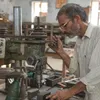How MSMEs can get on the path to innovation and find success
Despite being a huge potential driver of growth, India’s MSME sector has been struggling to innovate. Small and medium businesses have understood the potential of digitisation, and it is important that they get the support they need to succeed.
Since the last few years, there has been a lot of buzz around supporting micro, small, and medium enterprises of India. The government has also taken crucial steps to handhold these enterprises, which contribute to 30 percent of India's GDP.
However, despite being a huge potential driver of growth, the sector has been struggling to follow the innovation route. The RBI report of 2019 also revealed that the MSME sector is yet to benefit from the advances in digitisation, which can substantially reduce cost and time for this sector.
The onset of pandemic COVID-19 pointed India towards technological development. Even though the choice of digital adoption was forced for many enterprises, they pressed the pedal on it during pandemic-induced lockdowns and were able to survive.
But what keeps MSMEs from innovating?
Speaking with SMBStory, industry experts like Sandip Chhettri from TradeIndia, one of India’s largest B2B portals; Vikas Varma, Chief Operating Officer, South Asia, Mastercard; and Amit Kumar, Founder of MSME education and advisory platform MSMEx; talk about the real barriers to innovation among MSMEs and advise on the ways to overcome them.
The ‘jugaad’ mindset is the key barrier
Amit tells SMBStory that one of the biggest barriers is lack of awareness and understanding of what innovation actually is.
“Our MSMEs consider every jugaad as innovation. They are creative but every creativity is not innovation. Any creativity or jugaad needs to be refined for standardisation, scale, and commercialisation to treat that as innovation,” he says.
“Our Indian style of doing business is not conducive to encourage and cultivate this. Jugaad is always cheap and fast and with a short-term approach in mind, MSMEs do not invest for the long term. They do not have patience to convert jugaad into Innovation,” Amit adds.
Basic infrastructure is missing
India's MSME sector comprises 63 million units and has created more than 100 million jobs. However, the lack of basic infrastructure has restricted their growth for decades.
“Lack of financial resources, right platforms for networking and guidance, and knowledge are some of the significant hurdles to the growth of Indian MSMEs,” Vikas says.
Sandip says skilled labour, access to finance and information, infrastructure, and technology are other dominating factors that put barriers in the way of MSME innovation.
Development and implementation of any innovation demands skilled labour. However, more than 85 percent of innovative small and medium firms see unavailability of skilled workers as a barrier to innovation, making it one of the foremost challenges in SME innovation, says Sandip, adding SMEs are generally unable to recruit a highly skilled workforce due to financial constraints and lack of adequate infrastructure.
“SMEs in India face a vicious circle of financial challenges in pursuing innovation. Firstly, the cost of innovation itself is high; secondly, SMEs lack the financial resources to implement innovation; and lastly, access to finance from external financial institutions seems to be limited, creating further bottlenecks,” Sandip tells SMBStory.
The non-availability of institutional finance on affordable and easy terms is hindering access to new technologies. In India, the situation is further complicated by the fact that the preferred mode of finance is either self or other sources.
In other cases, MSMEs and small business entrepreneurs often don’t understand cash flow. They fall short of money to get back into business, thereby hindering growth and scaling-up opportunities.
Market-related challenges
Understanding the market is paramount in this competitive era of business.
However, MSMEs are at large ignoring this basic factor. Sandip points out that market characteristics such as competition, protectionist nature, dominance, monopoly, and demand, among others, affect a firm’s ability to innovate, especially product- and market-related innovations.
“More than half the innovative small and medium firms also face the barrier of uncertain demand for innovative products and services. Given the uncertain demand, SMEs would be reluctant to invest their resources in developing new products and would focus instead on improving their production and quality processes,” he explains.
Innovative products are generally aimed at a niche market that is often not clearly visible or present. Hence, tackling these market-related challenges becomes very important. This also greatly hampers product and design innovation, which at times plays a critical role in elevating exports and the global market share of SMEs.
Why are these barriers unaddressed?
As development and growth of the MSME sector is in the spotlight, it is important to understand why barriers remain unaddressed, given that there’s so much talk happening.
Amit believes that every innovation initiative may not guarantee success, and so the business is all about taking risks “where we are bullish”. MSME founders do not encourage innovation because they seek guaranteed success, and hence it never fits into their strategy.
This is why one of the important ways to enable MSME innovation is by letting them know and understand the meaning of innovation and growth perspectives.
Ways to overcome the barriers
Vikas says that unless these gaps are addressed with urgency and at scale, vast numbers of small businesses will continue to be left behind.
“The economy will miss out on the jobs and services these businesses could contribute to accelerate post-pandemic economic recovery,” he says.
He further adds that it is imperative to address the root cause in the innovation ecosystem by enabling policy, improved market access, enhanced infrastructure, and collaboration between the public and private sectors to devise programsmes that provide customised solutions for the specific needs of MSMEs.
Sandip offers some more suggestions to help MSMEs overcome barriers to innovation:
Education is important
Skill development is one of the most important steps that needs to be taken, Sandip says. The government and institutions should promote capacity development programmes and vocational education and training that include innovation in their curriculum. Establishing a dedicated SME university for skill development can be an important step towards eliminating this barrier.
Laws and regulations that cause negative impacts on the overall growth of the MSME sector and innovation, such as specific labour regulations pertaining to factories, should be changed.
Availability of finance is a must
Government schemes and market mechanisms should ensure credit flow. The schemes need to expand to meet the demand of the sector.
“Ensure adequate support mechanisms exist for entrepreneurs willing to establish small enterprises. The Startup India plan is a step in the right direction. The government can create an innovation fund under the Ministry of MSME, which can help provide finance to SMEs, especially for supporting innovation.”
Focus on capacity building programmes
The government should look at institutions and programs that can help promote science, technology, and innovation in the existing context.
“IPR in general remains an area of concern and development among Indian SMEs. There is a need to focus on capacity building programmes to train SMEs to identify market potential and devise an appropriate entry strategy while addressing IPR issues.”
It is imperative for government and industry to facilitate the development of more shared research and testing laboratories, especially in key manufacturing clusters.
Edited by Teja Lele









